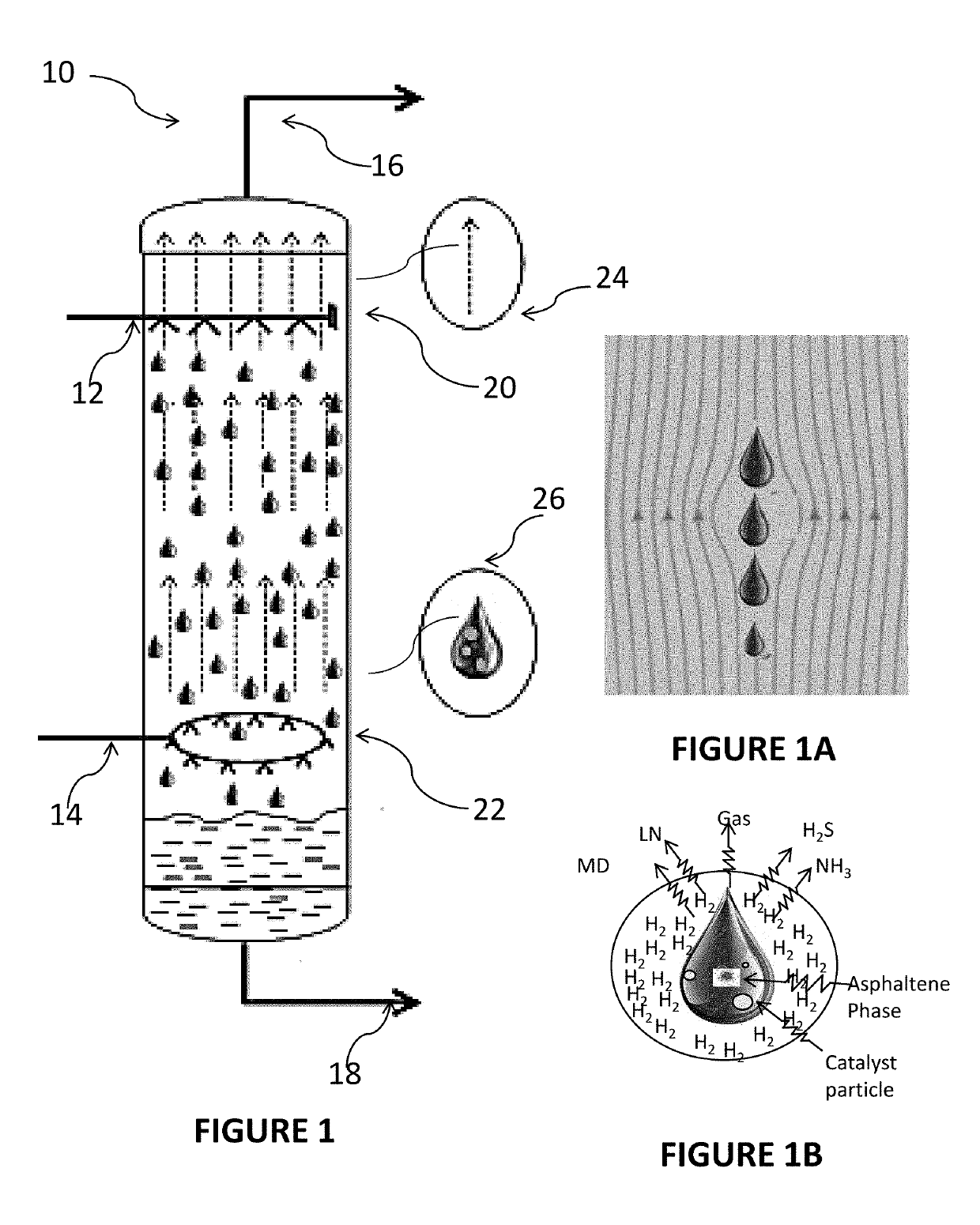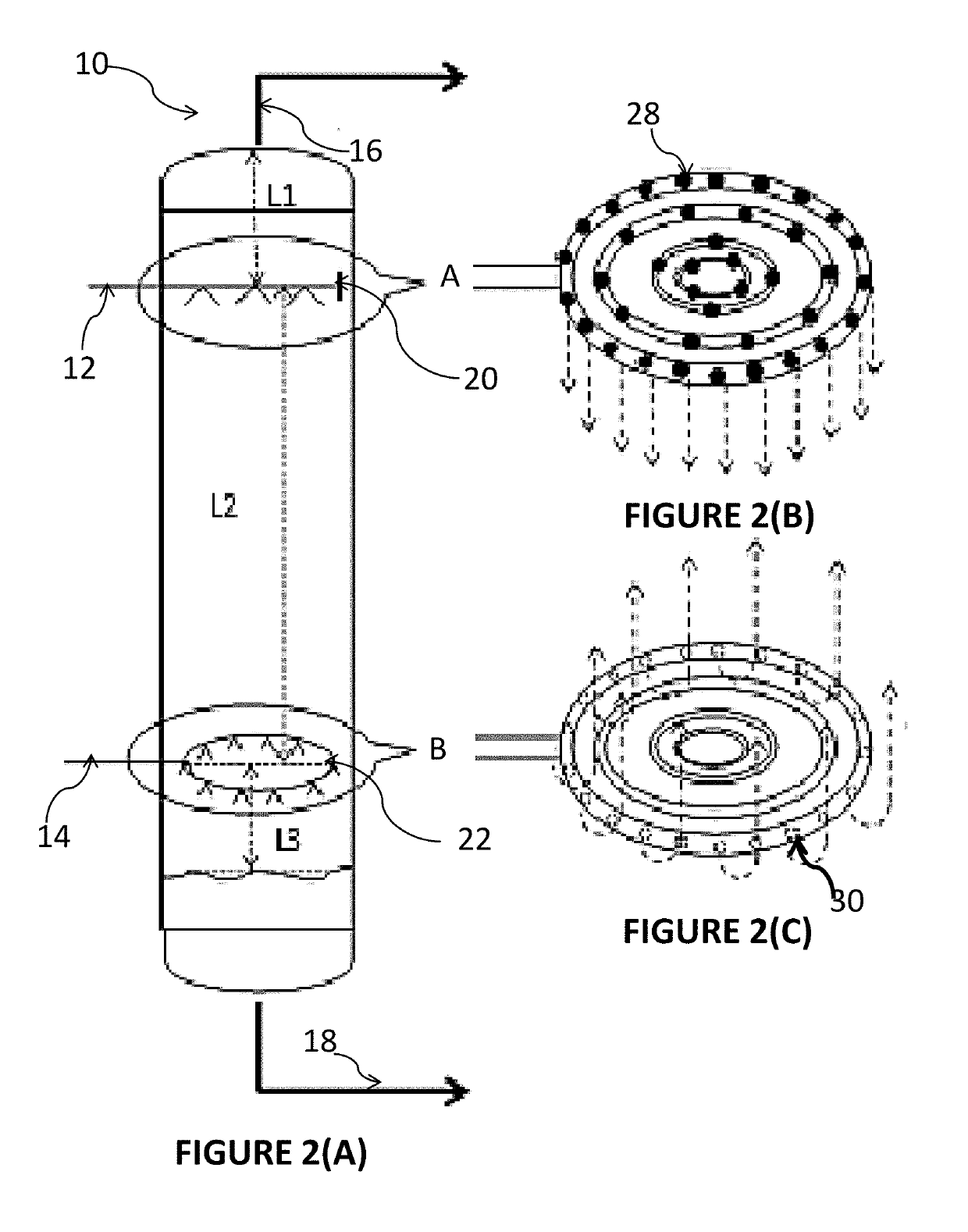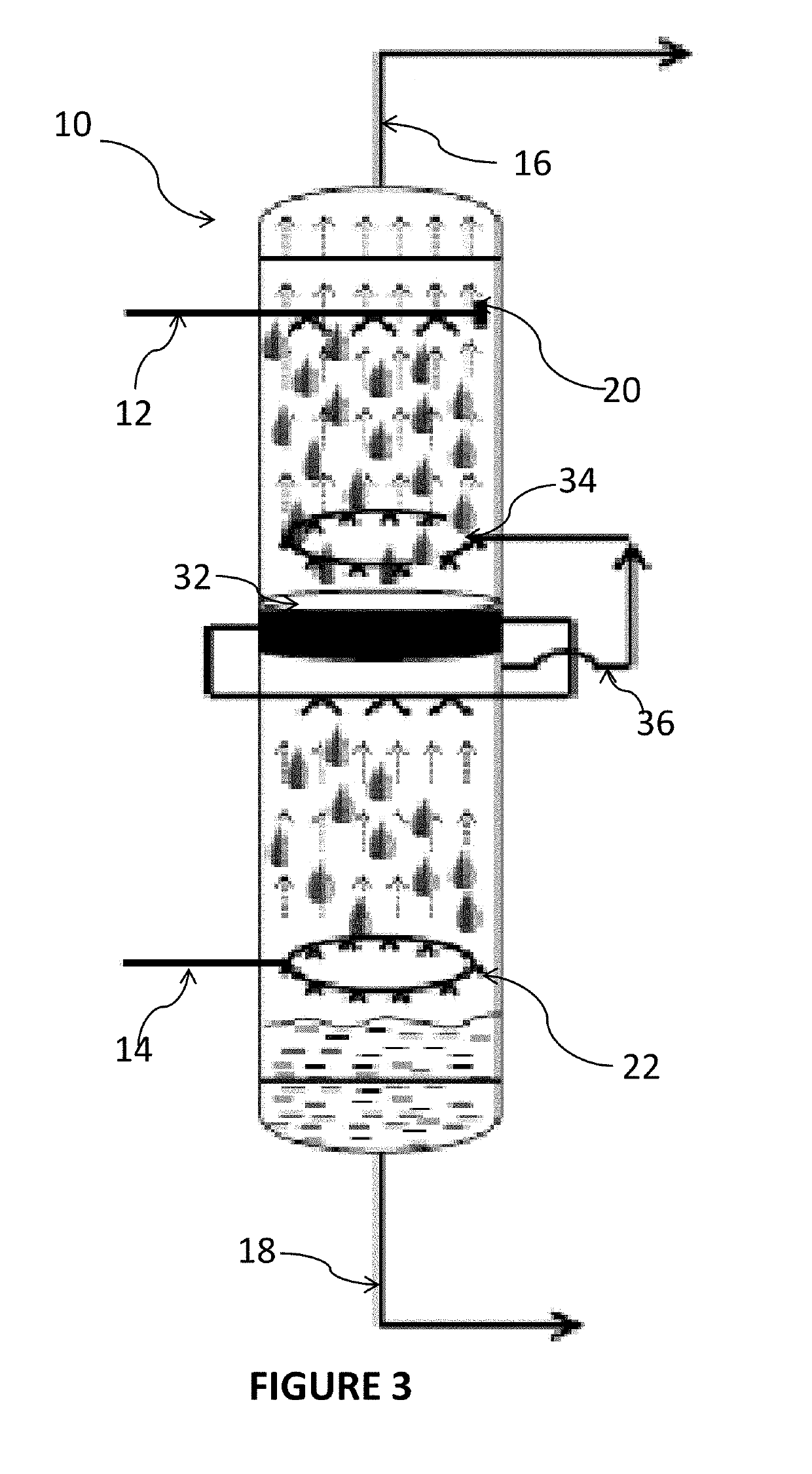Reactor system and process for upgrading heavy hydrocarbonaceous material
a hydrocarbonaceous material and reactor technology, applied in the direction of hydrocarbon oil cracking, chemistry apparatus and processes, petroleum industry, etc., can solve the problems of easy disposal of residue oil, depletion of high-quality crude oil supply, and drastic increase in demand for refined fossil fuels
- Summary
- Abstract
- Description
- Claims
- Application Information
AI Technical Summary
Benefits of technology
Problems solved by technology
Method used
Image
Examples
Embodiment Construction
[0035]It should be understood at the outset that although illustrative implementations of the embodiments of the present disclosure are illustrated below, the present invention may be implemented using any number of techniques, whether currently known or in existence. The present disclosure should in no way be limited to the illustrative implementations, drawings, and techniques illustrated below, including the exemplary design and implementation illustrated and described herein, but may be modified within the scope of the appended claims along with their full scope of equivalents.
[0036]The term “some” as used herein is defined as “none, or one, or more than one, or all.” Accordingly, the terms “none,”“one,”“more than one,”“more than one, but not all” or “all” would all fall under the definition of “some.” The term “some embodiments” may refer to no embodiments or to one embodiment or to several embodiments or to all embodiments. Accordingly, the term “some embodiments” are defined ...
PUM
 Login to View More
Login to View More Abstract
Description
Claims
Application Information
 Login to View More
Login to View More - R&D
- Intellectual Property
- Life Sciences
- Materials
- Tech Scout
- Unparalleled Data Quality
- Higher Quality Content
- 60% Fewer Hallucinations
Browse by: Latest US Patents, China's latest patents, Technical Efficacy Thesaurus, Application Domain, Technology Topic, Popular Technical Reports.
© 2025 PatSnap. All rights reserved.Legal|Privacy policy|Modern Slavery Act Transparency Statement|Sitemap|About US| Contact US: help@patsnap.com



